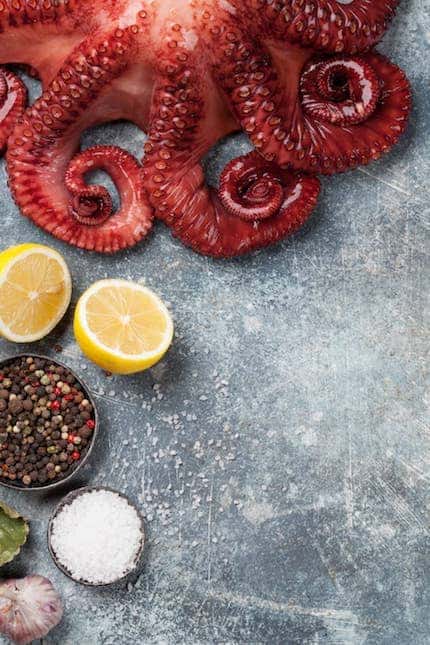It’s Elementary
Learning to cook without recipes begins by cooking without them.
Concealed within every recipe that you’ve ever read, beneath the tedious preamble of writerly self-indulgence, the pseudo-scientific tweaks, the timings and temperatures that fail to make sense, the pornographic money-shot of the oozing cheese—behind all of that is a basic foodstuff like a piece of meat, and a basic way to prepare it.
I call that a building block. To cook whatever you want, skip the recipes and just learn these.
A building block isn’t a “skill.” Being able to execute a quarter-inch julienne with a chef’s knife is not going to help you cook for yourself. Neither is the ability to flip an omelette single-handedly.
Knowing how to boil a green bean—now that’s a building block. Once you can do that, then you can boil peas and asparagus, too, since green vegetables are all practically interchangeable. When you learn how to roast and sear them, then you can accomplish whatever you want with those vegetables. Never again will you need a recipe to tell you what to do with a Brussels sprout.
A building block isn’t a prescription like a recipe, it’s a strategy, a way to transform a raw foodstuff into a basic ingredient that is fine by itself or that can go into some preparation you have in mind.
Seemingly complex dishes are just combinations of these elements. If you can poach a slab of beef and fry some bacon, then you can make bœuf bourguignon. It really is that simple.
Beef Burgundy (bœuf bourguignon) is often presented as a summit of culinary savoir-faire. Recipe-writers typically underscore that notion with two dozen steps of stupefying technical instruction, in which a sprig of parsley receives the same level of attention as the beef.
In essence, the dish is just a basic strategy for cooking a tough piece of meat. Poaching it happens to be one way to soften its dense fibers and otherwise indigestible sinew. As a bonus, the method yields a tasty soup broth, which can be reduced into a rich gravy, if you prefer.
Success depends on two simple things. The poaching itself requires the ability to maintain a simmer. You don’t need an engineering degree. The body and richness of the broth require well-marbled, collagenous meat from an animal’s shoulders and pectoral muscles. On a cow, we call that the chuck and the brisket.
So, if you can remember a word like “chuck,” and if you can learn how to simmer a hard-boiled egg, then you’ll have everything it takes to make a bœuf bourguignon delicious enough for the kind of people who read heavy-weight chef books with pornographic shots of oozing cheese—people like myself, in other words.
The rest is just embellishment.
Burgundy, for example, simply means that red wine, bacon and mushrooms are involved. Carbonnade means that beer goes in place of the wine. An Irish stew involves a tough cut of mutton and potatoes. And so on.
Ideas for such variations can come from anywhere—from a restaurant, from the back of your fridge, from a recipe. You shouldn’t need the recipe, however, to tell you how to make the stew itself.
A recipe can’t tell you, anyway—at least, not in a way that matches your own routines and that produces delicious results without resorting to separate preparations like homemade stock.
All you need are some simple techniques and a basic familiarity with the qualities of your ingredients.
So, beets are roasted, since roasting concentrates the vegetable’s flavors whereas boiling or steaming dilutes them. Afterwards, the vegetable is ready for any of the numerous salad recipes in which they appear.
Artichokes, by the way, are easiest to peel when cooked beforehand. The leaves come right out, and the choke can be removed with a butter knife. Afterwards, the hearts go into any of the Mediterranean dishes in which they appear.
Pork chops can go into any sauté calling for beef steaks. Turkey breasts can go in place of pork chops. Sea scallops can replace the turkey breasts. They’re all functionally equivalent. Each one is a lean, light, and tender meat.
Basic principles like that, not recipes, are the building blocks of whatever you want to make.
It really is that simple.
 |
SHARE THIS ARTICLE
